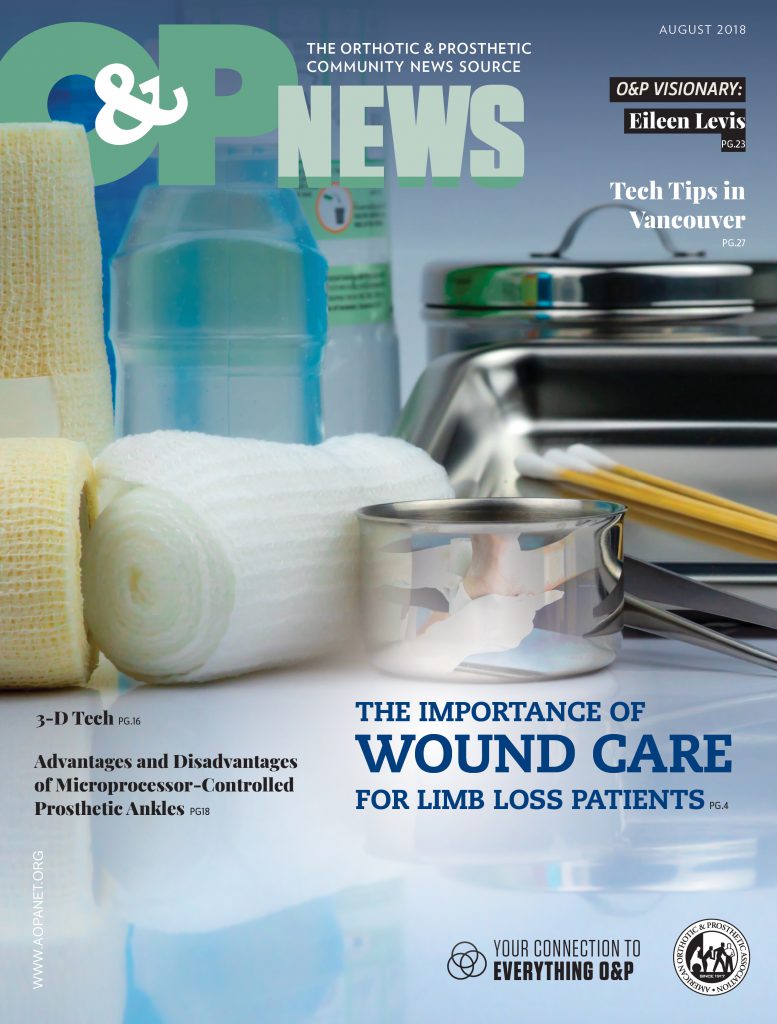Eileen Levis
Revamp O&P reimbursement, regulations, funding, and education to focus on the “whole” patient.
When Tom Fise, executive director for AOPA, asked me to imagine myself as having one day to rule the O&P industry, I was like a kid in a candy store. Let’s see how much candy I can put in my bag in one day.
Having been in the industry for most of my adult life, I have seen tremendous change—some good, some not so good. I am co-owner of a multisite orthotics and prosthetics practice, so I know firsthand the challenges faced by both the business operations and the clinical operations. I sit on the Jurisdiction A Council and am a member of the Noridian Provider Outreach and Education Advisory Group. As president of the Pennsylvania Orthotic and Prosthetic Society, I am able to share with members valuable tools and information as a result of these affiliations.
That being said, my very first proclamation would be to revamp the reimbursement system. Durable medical equipment (DME) would be separated from O&P. Functional levels would be expanded and further defined. Annual adjustments to “allowables” would be made based on realistic and relevant data.
Orthotists and prosthetists would (and should) be recognized as health-care professionals. The ability to bill for encounters or visits would be complemented by device-specific billing. There would be no question that orthotist/prosthetist notes would hold the same validity as the notes of any other health-care professional. All orthotists and prosthetists would be licensed by their states. State licensing boards would provide oversight just as they do all health-care professionals.
As I look around the “store,” my next focus would be on insurance fairness. Regulations would be put in place that would not restrict access to orthotic and prosthetic care and services.
The regulations would provide for reasonable reimbursement as stated above. There would be incentive bonus payments made based on patient outcomes. I would include streamlined processes for timely reimbursement of clean claims. One would actually be able to contact an insurer or third-party payor and talk to a knowledgeable, helpful representative.
Digging deeper into the candy box, I find technology. I would fund research at all levels. I would see the rapid introduction of stellar technological advances in both prosthetics and orthotics. I would maintain a database to evaluate the efficacy of all technology and would incorporate projections and parameters to stimulate process improvement and competitive options. Third-party payors would provide reimbursement for high and low technology.
So that completes my morning. As I move into the afternoon, I am keenly aware of only a few more hours left to my rule. So much to do, so little time!
The professionals—how can I make them better? Educate, educate, educate! I would see that all orthotists and prosthetists received the highest level of education from the best and brightest in the field. Everyone would participate in advanced research. Knowledge of business, regulatory and compliance requirements, billing and reimbursement, and marketing and customer service would all be part of the core educational program. There would be more universities and learning institutions providing O&P education, including a pathway via the branches of military. That pathway would be tuition-free for active-duty service members. Suppliers/manufacturers would offer scholarships to high school seniors enrolling in an O&P program who have contributed to their community in a meaningful way. Residency programs would all be based in teaching hospitals.
On to advocacy: Everyone in the O&P industry—from the practitioners to the suppliers and manufacturers to administrative staff—has skin in the game. All would work together to advocate at the federal, state, and local levels to promote a better understanding of what we do and provide information on initiatives and issues vital to the industry and to patients. Participating with patient advocacy groups such as the Amputee Coalition or fundraising events, such as the Cerebral Palsy 5-K Run, would be required of all practitioners. Practitioners need to engage at this level with their patients.
Finally, we would need to focus on patient-centered care. Nothing is so sweet in the candy store as the patient. The treatment model for all orthotists and prosthetists would be focused on the patient, the “whole patient.” Too often it is only the patient’s device that is the core of treatment when it should be the patient as a whole. How can we expect our patients to achieve optimum outcomes when many face barriers such as poor nutrition, depression, or lack of transportation to medical appointments? Just making a great device is not enough. Practitioners, under my rule, would all be trained under this care model. They would work with a patient navigator, who would assist patients in overcoming any barriers they may have to help them get to the best “total” outcome possible.
As my reign is coming to an end, I realize all of the things I have done could indeed one day be accomplished. It will not be easy. It would require a cohesive industry that is steadfast, and ready and willing to make the commitment. Are you ready to rule the day?
Eileen Levis is president and chief executive officer of Orthologix.


